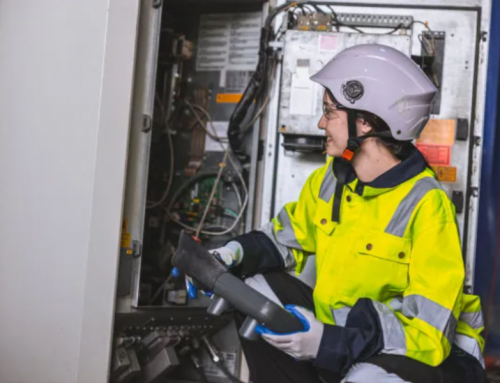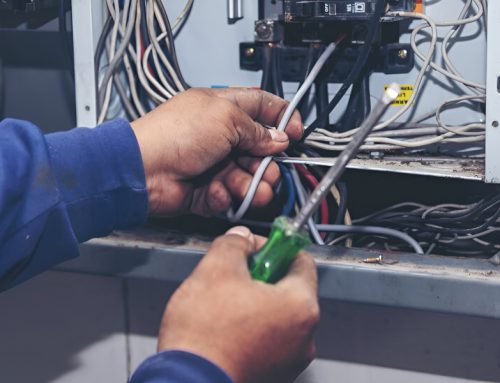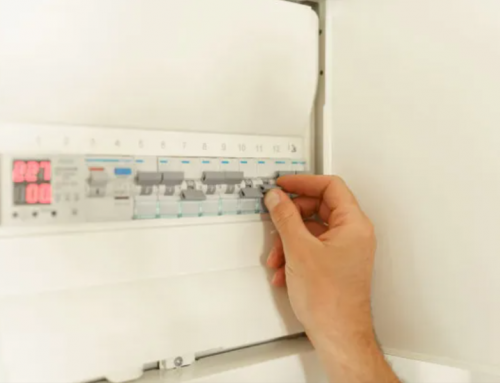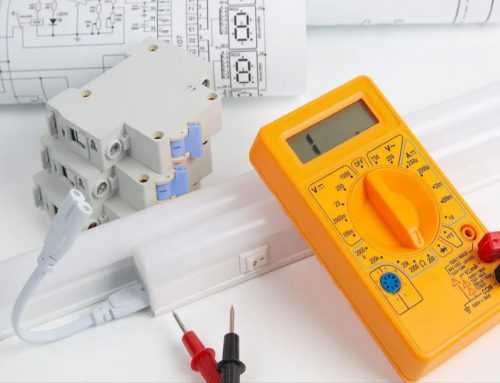How to remove circuit breaker from panel box?
1.Introduction.
This article will introduce the concepts of circuit breakers and distribution boxes to readers, as well as how to remove circuit breakers from distribution boxes. At the same time, we will explain the precautions that need to be taken before disassembly, and use practical cases to combine the relationship between circuit breakers and distribution boxes to provide detailed operating steps for everyone. Through reading this article, readers can understand how to correctly disassemble and maintain circuit breakers on distribution boxes, thereby ensuring the safe operation of electrical equipment.
2.Circuit breaker.
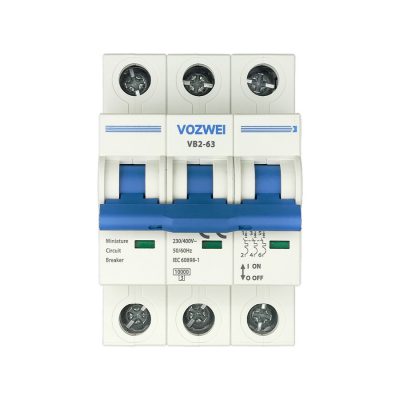
A circuit breaker is an electrical device used to protect circuits from overload and short circuits. It is widely used in households, industries, and commercial settings and is an indispensable component of the power system. The main function of a circuit breaker is to cut off the current when the circuit is overloaded or malfunctioning, in order to prevent overheating of wires, equipment damage, and even the occurrence of fire.
The working principle of circuit breakers is based on two mechanisms: thermal and electromagnetic. When current passes through a circuit breaker, it generates heat, and the circuit breaker is internally equipped with thermal components such as thermal relays or fuses. When the current exceeds the set value, the thermal element will sense this overload and generate high temperature, causing the contacts in the circuit breaker to open and cut off the circuit. This mechanism can effectively prevent fires caused by wire overload.
In addition, the circuit breaker can also detect short circuit faults. When a short circuit occurs, the current will sharply increase, reaching a level that exceeds the withstand range of the circuit breaker. An electromagnetic trigger will sense an instantaneous change in current and immediately cut off the circuit. This reaction speed is very fast and can quickly prevent the continued flow of current, thereby minimizing the damage of faults to circuits and equipment.
There are various types of circuit breakers, mainly including air circuit breakers, magnetic circuit breakers, and electronic circuit breakers. Air circuit breakers are the most common type and are widely used in low-voltage and medium voltage circuits. It utilizes the arc generated by the passage of current to disconnect the circuit. Magnetic circuit breakers use electromagnetic force to cut off circuits and are suitable for high-voltage circuits. Electronic circuit breakers are based on electronic technology, with higher accuracy and adjustability, and are widely used in sensitive electronic devices and computer networks.
One of the important characteristics of a circuit breaker is its rated current and breaking capacity. The rated current refers to the range of current that a circuit breaker can operate normally, while the breaking capacity represents the ability of the circuit breaker to cut off the circuit in the event of a fault. These parameters need to be selected based on the actual circuit load and safety requirements to ensure the reliability and safety of the circuit breaker.
In addition to basic overload and short circuit protection functions, circuit breakers also have other additional functions, such as floor drain protection, overvoltage protection, and remote control. Floor drain protection can detect ground faults in the circuit and cut off the current in a timely manner to prevent electric shock accidents. Overvoltage protection can protect equipment from the impact of excessive voltage from the power grid. The remote control function allows users to conveniently and safely control the circuit breaker by remotely operating it.
In summary, circuit breakers are a critical electrical device used to protect circuits and equipment from the effects of overload and short circuits. It senses and cuts off current through thermal and electromagnetic mechanisms, ensuring the safe and reliable operation of the circuit. In the fields of construction, industry, and commerce, the correct selection and use of circuit breakers is crucial for ensuring the safety of electrical systems and helping to reduce the risk of fire and equipment damage.
3.Distribution box.
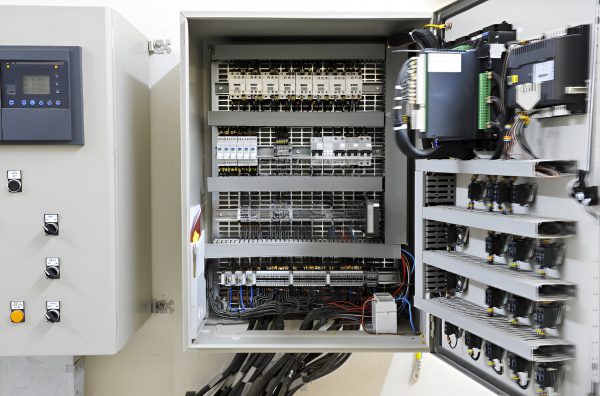
A distribution box is an electrical device used for installing, distributing, and protecting power supplies. It is a key component in the power system, responsible for delivering the electrical energy output from high-voltage transformers through multiple stages such as voltage transformation, distribution, and protection to various electrical equipment, in order to meet the electricity needs of various fields such as industry, commerce, and civil use. Distribution boxes play a crucial role in modern society and urban construction.
The main function of the distribution box is to distribute high-voltage power to low-voltage circuits. High voltage power is usually provided by substations and transmitted through transmission lines to places where electricity is needed. The transformer is responsible for converting the high-voltage power supply into a suitable low-voltage power supply, and then transmitting the power supply to the distribution box through cables or wires. The interior of the distribution box is divided and distributed according to different electrical equipment needs, and different components and accessories can be selected based on the electricity needs of different locations.
In addition to distributing power, the distribution box is also responsible for circuit protection and control. In order to ensure the safe and reliable operation of electrical equipment, distribution boxes usually include various protection settings such as fuses, circuit breakers, isolation switches, overload protection, etc. These measures can prevent circuit overload, short circuit, and other faults from occurring, which plays an important role in the safety of electrical equipment and personnel. In addition, the distribution box also includes various control settings such as electronic protectors, remote switches, and monitoring instruments, which can achieve remote operation and monitoring of electrical equipment.
With the continuous progress of technology, modern distribution boxes have become increasingly intelligent and automated. For example, some distribution boxes can be remotely monitored and managed through the internet, achieving comprehensive control of the entire electrical system. At the same time, some new distribution boxes have also added functions such as intelligent sensing and energy efficiency detection, which can improve the efficiency and energy-saving of electrical equipment, and reduce maintenance and management costs.
It should be noted that when selecting and using distribution boxes, relevant electrical safety standards and regulations must be strictly followed. When installing and maintaining the distribution box, it is necessary to ensure compliance with national and local electrical safety standards, use materials and processes that comply with regulations, strictly follow design requirements for installation and commissioning, and conduct regular inspections and maintenance. At the same time, it is necessary to pay attention to preventing safety accidents such as electrical fires. Strict control measures must be taken for any potential electrical hazards to ensure the safety of electrical equipment and personnel.
In short, a distribution box is an important electrical equipment used for distributing, protecting, and controlling power. It is an indispensable component of modern electrical systems, which can help achieve the safe and reliable operation of electrical equipment. With the development of technology, it continues to develop towards intelligence, automation, efficiency, and energy conservation.
4.Association between distribution boxes and circuit breakers.
Distribution boxes and circuit breakers are two commonly used electrical equipment in the power system, usually used simultaneously. A distribution box is an electrical device used for installing, distributing, and protecting power supplies, while a circuit breaker is an electrical device used to protect electrical equipment from issues such as current overload or short circuits.
The association between distribution boxes and circuit breakers can be introduced from the following aspects:
(1). Function: The main function of the distribution box is to distribute high-voltage power to low-voltage circuits and be responsible for circuit protection and control. A circuit breaker is an electrical device that protects electrical equipment from issues such as current overload or short circuits. Therefore, multiple circuit breakers are usually included in the distribution box to protect different circuits. The selection of circuit breakers needs to be matched based on parameters such as the load current of the circuit, the rated current of the circuit breaker, and the rated working voltage to ensure the safe and stable operation of the circuit.
(2). Configuration: In the design of distribution boxes, circuit partitioning and allocation are usually carried out according to different circuit requirements. Each circuit needs to be equipped with corresponding circuit breakers to timely control and protect the circuit in case of problems. Distribution boxes usually come in different forms, such as fixed, plug-in, and modular, and each type of distribution box has a corresponding circuit breaker configuration. At the same time, the reliability and operability of each circuit breaker should also be ensured during use.
(3). Protection: Circuit breakers in distribution boxes are usually used to protect different circuits to ensure their safe and stable operation. When problems such as overload or short circuit occur in the circuit, the circuit breaker will automatically trip and cut off the circuit, thereby avoiding equipment damage or other accidents. Therefore, when selecting and using circuit breakers, it is necessary to match them based on the load characteristics and rated current of electrical equipment to ensure their normal operation and reliability. At the same time, in practical use, it is also necessary to regularly inspect and maintain the circuit breaker to ensure its normal operation and reliability, and to avoid circuit failures and safety accidents.
In short, distribution boxes and circuit breakers are two commonly used electrical equipment in the power system, which are closely related and cooperate with each other to complete tasks such as circuit distribution, protection, and control. Reasonably configuring circuit breakers and scientifically dividing and allocating circuits can effectively protect electrical equipment and ensure the safe and stable operation of the electrical system.
5.Precautions before disassembly.
Before removing the circuit breaker from the distribution box, preparations must be made in advance to ensure safe and efficient completion of the task.
The following is the preparation work for removing the circuit breaker from the distribution box:
(1). Stop power supply: Before disassembling the circuit breaker in the distribution box, the power supply must be cut off first. Because the current experienced by the circuit breaker in the connected state may pose a threat to personal safety, it is necessary to cut off the control power supply before disassembly to ensure electrical safety.
(2). Confirm the position of the circuit breaker: Different types of distribution boxes have different installation methods, so before disassembling any circuit breaker, please ensure that you know the correct disassembly steps and tools. Place all installation tools and equipment in an easy to use location and check if they meet the requirements for safer and more efficient work.
(3). Understand the configuration of the circuit breaker: Before starting to disassemble the circuit breaker, it is necessary to carefully understand the rated current, rated voltage, and rated short-circuit capacity parameters of the circuit breaker. In addition, it is necessary to check the circuit status near the circuit breaker to ensure that no other circuits are still running after disconnecting.
(4). Protect oneself: During the disassembly process, workers must wear necessary safety equipment, such as gloves and safety tweezers, and follow relevant operating procedures. If there is high voltage in the distribution box, it is best to have experienced and qualified professionals carry out the operation. In any case, it is necessary to ensure good insulation and grounding to prevent accidents from occurring.
(5). Disassembly steps: Before truly starting disassembly, ensure that the circuit breaker can be easily accessed from inside the distribution box. The specific disassembly steps may vary depending on the type of distribution box, but in most cases, you need to use tools such as a screwdriver or wrench to remove the circuit breaker fixing screws, and then carefully remove the circuit breaker from the installation socket.
In general, before disassembling the circuit breaker on the distribution box, it is necessary to first understand the configuration of the circuit breaker, familiarize oneself with the workflow, prepare necessary tools and equipment, and wear necessary personal protective equipment to ensure work safety and efficiency. If there are uncertain situations, please seek professional assistance to avoid potential problems.
6.How to remove the circuit breaker from the distribution box.
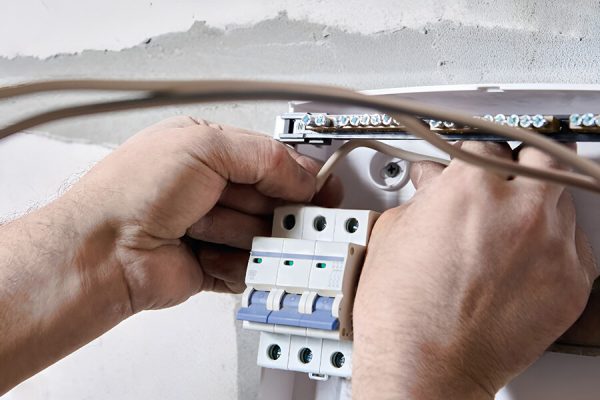
The following are the general steps to remove the circuit breaker from the distribution box:
(1). Safety preparation:
Ensure power outage: Before performing any electrical equipment operation, ensure that the power supply is cut off and take necessary measures to ensure that the power supply is not reconnected. This is the first step to ensuring your safety.
Wear personal protective equipment such as insulated gloves, safety glasses, and protective masks to prevent any potential electric shock or other hazards.
(2). Confirm the position and type of the circuit breaker:
In the distribution box, identify the location of the circuit breaker you want to disassemble and understand its basic information such as model, rated current, rated voltage, and rated short circuit capacity. This information can usually be found in the circuit breaker itself or corresponding documentation.
(3). Disconnect the cable:
Use an electrical screwdriver or wrench and corresponding size to disassemble the cable connections related to the circuit breaker. Ensure that power is cut off and all power sources are disconnected when performing this operation.
(4). Loosen the fixing screws:
Use appropriate tools such as screwdrivers or wrenches to loosen the screws securing the circuit breaker in the distribution box. These screws are usually located in the upper and lower parts of the circuit breaker. Please note that the correct size of the screwdriver should be used to avoid damaging the screw head.
(5). Carefully remove the circuit breaker:
After loosening all fixing screws, carefully remove the circuit breaker from the slot of the distribution box. Be careful not to use excessive force to avoid damaging the circuit breaker or distribution box.
(6). Cleaning and Protection:
After removing the circuit breaker, you can inspect and clean the circuit breaker and its surrounding area. Ensure that there are no debris or foreign objects obstructing the installation of the new circuit breaker.
Please note that the above steps are for general guidance only, and there may be some slight differences between different types of distribution boxes and circuit breakers. In practical operation, please always refer to the manufacturer’s manuals and standards of relevant electrical equipment, and consult professional electrical engineers for advice when needed. Electrical operation involves high risks, so be careful and ensure safe operation.
7.Case Study.
In order to better understand the steps of removing the circuit breaker from the distribution box, the following is an introduction based on a practical case:
The online production equipment in a certain factory needs maintenance and requires the removal of a circuit breaker from the distribution box. This circuit breaker is used to control a motor, with a rated voltage of 380V and a rated current of 50A.
The operation steps are as follows:
(1). Power outage: Firstly, the staff must cut off the power supply of the equipment and take necessary measures to ensure that it cannot be reconnected during operation.
(2). Confirm the position and type of the circuit breaker: The staff identified the circuit breaker in the distribution box, checked and confirmed its basic information such as model, rated current, rated voltage, and rated short circuit capacity.
(3). Disconnect the cable: Turn the electrical wrench to loosen the cable connection associated with the circuit breaker.
(4). Loosen the fixing screws: Use the correct size screwdriver to loosen the screws that secure the circuit breaker.
(5). Carefully remove the circuit breaker: After loosening all fixing screws, carefully remove the circuit breaker from the slot of the distribution box. Pay attention to controlling the strength of your hands in this step to avoid damaging the circuit breaker or distribution box.
(6). Cleaning and Protection: After removing the circuit breaker, the staff checks and removes debris from the circuit breaker and its surrounding area. And it is also necessary to wrap insulation tape around the pins on the circuit breaker (the part that comes into contact with the wires) for protection, in order to avoid short circuits and other issues during future reinstallation.
(7). Installation of alternative circuit breakers: After completing the maintenance operation, a new alternative circuit breaker needs to be reinstalled. Follow steps 2-4 to fix the new circuit breaker in the distribution box and connect the cables.
(8). Restore power supply: After confirming that all connections are secure and fixed, the power supply can be restored and tested on startup to ensure normal operation of the equipment.
This case demonstrates a typical operating procedure for removing a circuit breaker from a distribution box, but please remember that each specific situation is different. If you encounter any questions or difficulties, please be sure to first consult the corresponding manual or seek advice and guidance from a professional electrical engineer.
Conclusion
Overall, removing the circuit breaker from the distribution box is a task involving electrical equipment operation that requires caution and safety. To avoid electric shock and other potential risks, it is essential to operate with a power outage and wear appropriate personal protective equipment.
Although this article provides general operating procedures, it is recommended to refer to relevant manufacturer manuals and standards in actual operation due to possible slight differences between different distribution boxes and circuit breakers. If you have any questions or difficulties with the operation steps, it is strongly recommended to consult a professional electrical engineer or relevant personnel for assistance.
Proper disassembly of circuit breakers is crucial for maintenance and repair work, which helps to ensure the safe operation of equipment and the safety of personnel. Therefore, before carrying out any operations, please ensure that you have sufficient knowledge and skills, or seek professional guidance. Only when operated safely can electrical equipment be effectively managed and maintained.
References
Appendix
Circuit: The complete closed path through which a current can pass.
